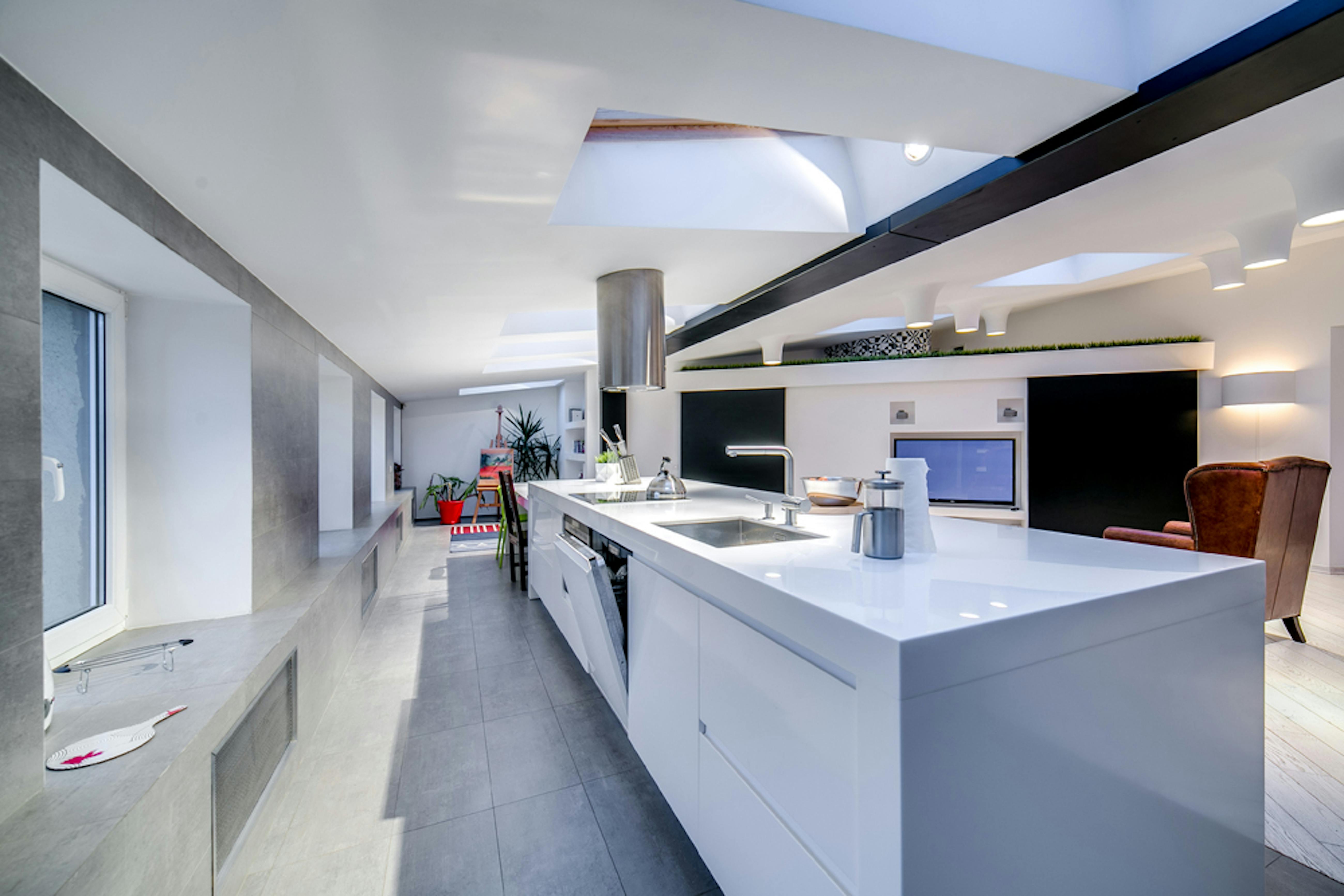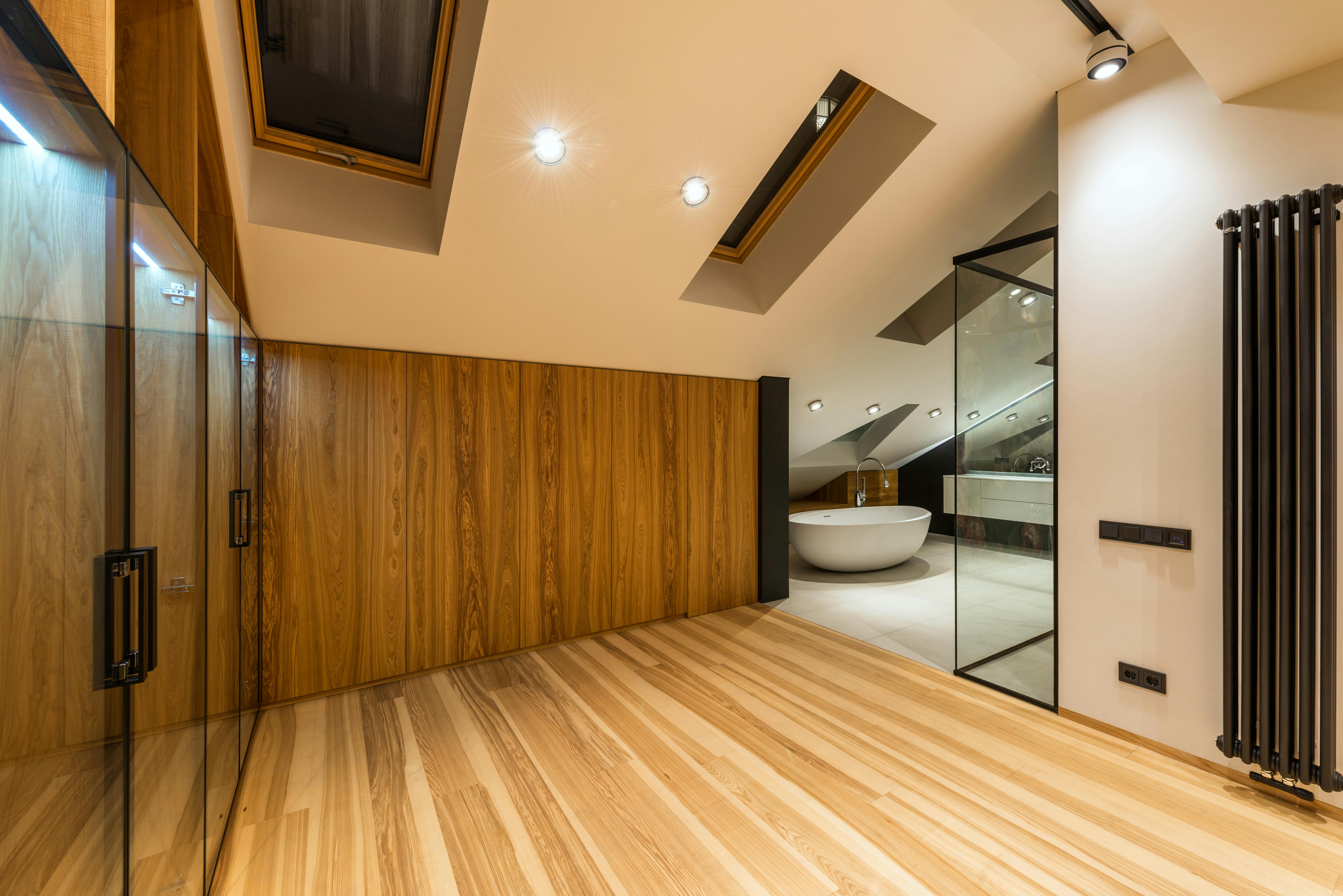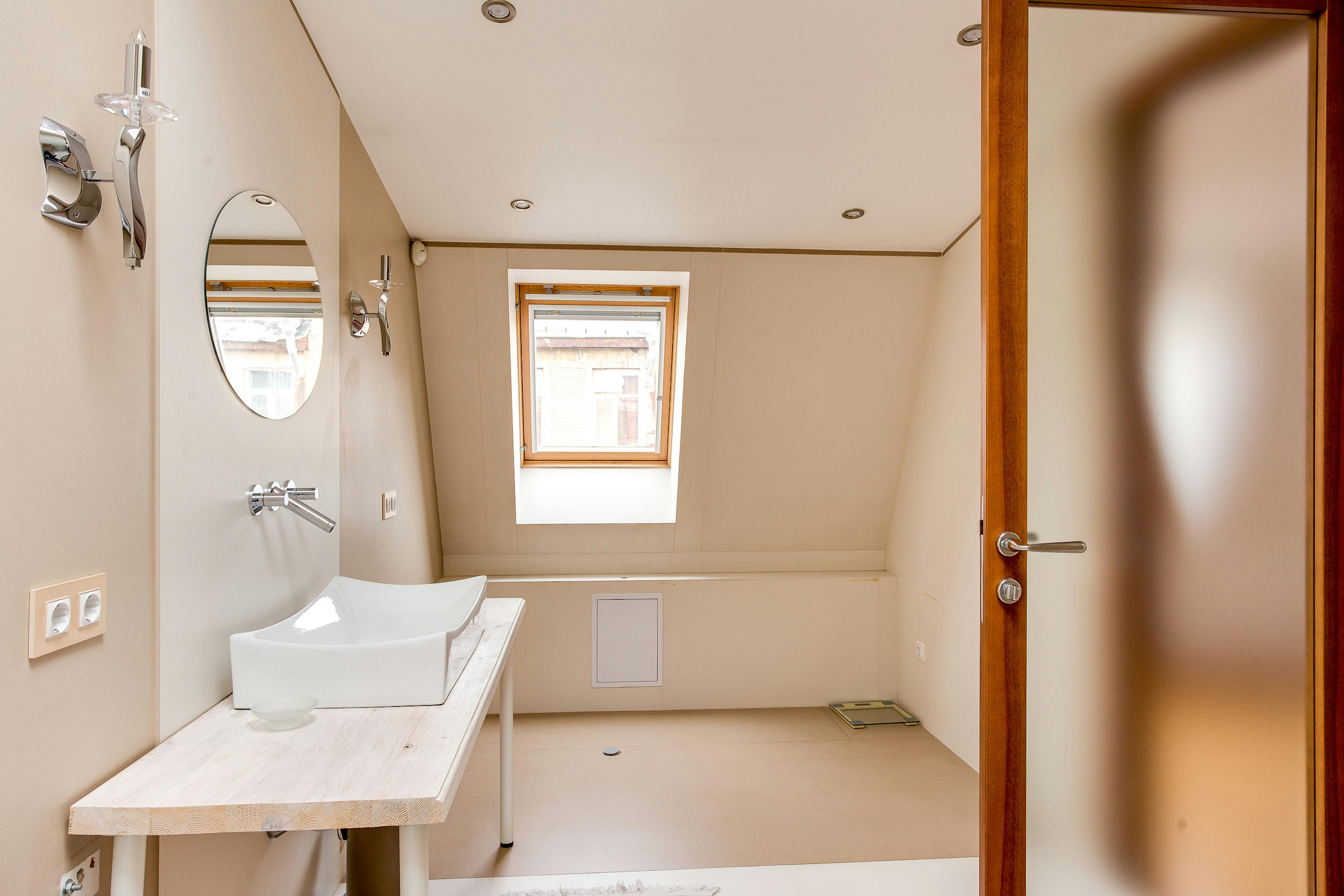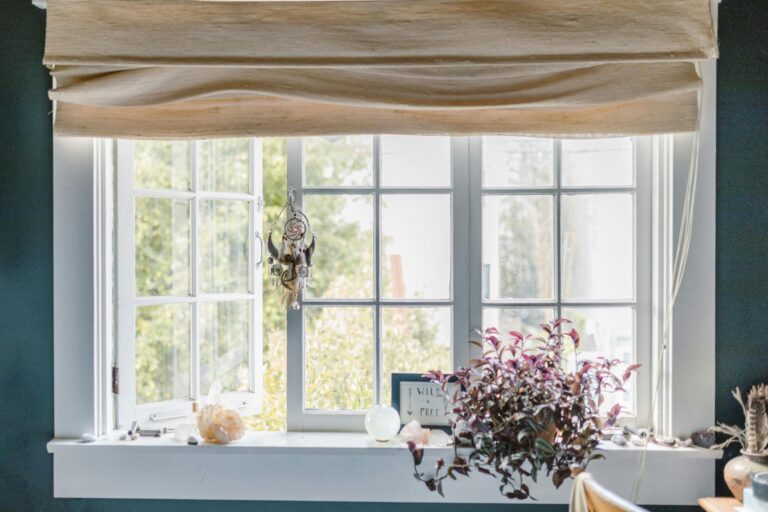Picture this: you climb a narrow staircase to what was once a cluttered storage space filled with forgotten boxes and dusty memories. But instead of encountering cobwebs and musty air, you step into a breathtaking penthouse-style sanctuary that rivals the most exclusive Manhattan lofts. This isn’t fantasy – it’s the reality of luxury attic transformations in 2025, where visionary designers are turning forgotten spaces into spectacular sky-high retreats.
The problem? Most homeowners see their attics as afterthoughts, missing the incredible potential that lies beneath sloped ceilings and awkward angles. They’re literally sitting on untapped square footage that could become their most dramatic and private sanctuary. The solution lies in understanding how today’s most innovative designers approach these challenging spaces, transforming architectural obstacles into stunning design features.

This Photo was taken by Алан Албегов.
The untapped potential hiding above your head
Your attic represents more than just storage space – it’s a blank canvas with unique architectural advantages that ground-floor rooms simply cannot offer. The sloped ceilings that seem like design challenges are actually opportunities for creating dramatic spatial experiences. Natural light enters differently at this elevation, creating shifting patterns throughout the day that ground-level spaces rarely achieve.
Recent data from the National Association of Home Builders shows that attic conversions can add 15-25% to a home’s value while providing some of the most cost-effective square footage expansion available. But beyond the numbers, these elevated sanctuaries offer something invaluable: separation from the daily household rhythm and a genuine sense of retreat.
The key lies in working with, rather than against, the inherent characteristics of attic spaces. Visionary designers understand that the angular geometry, varying ceiling heights, and unique proportions aren’t flaws to be hidden – they’re the foundation for creating spaces with personality and drama that conventional rooms cannot match.
Dramatic ceiling architecture becomes the star
The most successful luxury attic transformations treat the ceiling as the room’s primary architectural feature. Instead of fighting against sloped rooflines, leading designers embrace these angles to create soaring spaces that feel both intimate and grand. Exposed structural beams become sculptural elements, while varying ceiling heights create natural zones for different activities.
Consider the approach taken by high-end designers who integrate custom millwork that follows the roofline’s natural curves. These bespoke installations transform awkward angles into elegant built-in solutions, creating seamless storage while emphasizing the space’s unique geometry. Custom architectural details become essential tools for turning structural necessities into design assets.
| Ceiling Feature | Design Solution | Impact |
|---|---|---|
| Low sloped areas | Built-in reading nooks | Creates intimate spaces |
| Exposed beams | Integrated lighting systems | Adds warmth and structure |
| Peak height zones | Statement art installations | Creates focal points |
| Awkward angles | Custom storage solutions | Maximizes functionality |
Lighting design becomes crucial in these spaces. Strategic lighting placement along structural elements creates layers of illumination that emphasize architectural drama while providing practical task lighting for different zones within the space.

This Photo was taken by Max Vakhtbovycn.
Material choices that enhance architectural drama
The selection of materials in luxury attic transformations requires careful consideration of how different textures and finishes interact with angular surfaces and changing light conditions. Premium material selections focus on options that complement rather than compete with the space’s inherent drama.
Natural wood finishes work exceptionally well in attic environments, as their grain patterns and warm tones soften the sharp angles while adding visual weight to structural elements. Stone and metal accents provide contrast and sophistication, particularly when used sparingly as accent materials rather than dominant surfaces.
Creating zones within angular spaces
Successful attic transformations don’t treat the entire space as a single room. Instead, they create distinct zones that take advantage of varying ceiling heights and natural architectural divisions. The tallest areas become gathering or entertainment zones, while lower-ceiling areas transform into intimate retreat spaces perfect for reading or contemplation.
This zoning approach allows different activities to coexist comfortably within the same space. A luxury attic might include a central seating area, a private office nook, a mini bar, and even sleeping quarters – all unified by consistent design elements while maintaining their distinct identities.
Private observatory elements bring the sky indoors
One of the most compelling trends in luxury attic design involves incorporating observatory-inspired elements that celebrate the space’s unique relationship with the sky. This goes beyond simply adding windows – it’s about creating intentional connections with celestial views and natural light patterns throughout the day and night.
Strategic skylight placement becomes an art form in these transformations. Rather than random placement, visionary designers coordinate skylight positions with furniture layouts and activity zones. A reading area might feature an overhead skylight that provides perfect natural illumination during prime reading hours, while a relaxation zone could include strategically placed skylights for stargazing.

This Photo was taken by Алан Албегов.
Some of the most impressive luxury attic transformations include retractable roof sections or large-format skylights that can open to create an indoor-outdoor experience. These features require significant structural engineering but provide unparalleled access to natural light and fresh air while maintaining climate control when needed.
Telescope integration and stargazing features
Professional-grade telescope integration represents the pinnacle of observatory-style attic design. These installations require careful planning for weight distribution, vibration isolation, and easy access to different viewing angles. The most sophisticated setups include motorized telescope mounts and computerized tracking systems that can follow celestial objects throughout their movement across the night sky.
Supporting features for serious stargazing include red-light preservation systems that maintain dark adaptation, climate-controlled storage for delicate optical equipment, and comfortable seating positioned for extended observation sessions. These elements transform a luxury attic from a passive space into an active observatory.
Weather monitoring and environmental awareness
Many luxury attic observatories incorporate sophisticated weather monitoring systems that provide real-time data about atmospheric conditions. These systems help predict optimal viewing conditions while adding an element of scientific engagement to the space. Digital displays can show current weather data, astronomical events, and viewing recommendations.
According to the Astronomical League, home observatories have increased by 34% since 2020, with luxury residential installations representing the fastest-growing segment. This trend reflects growing interest in astronomy as both hobby and educational pursuit


